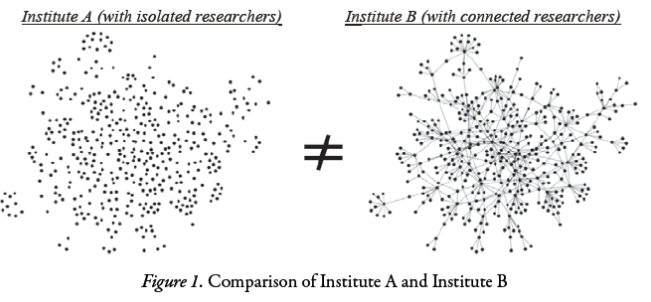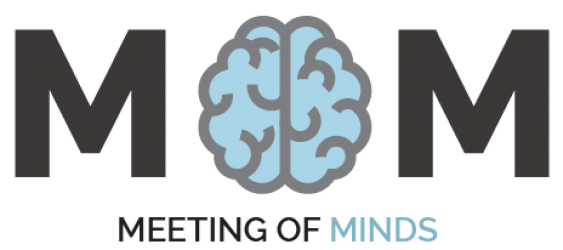Homophily and Academic Isolation
In addition to the sense of isolation felt by all researchers who will spend much of their time working alone, some people may also be subject to additional feelings of isolation.
Research suggests that international and part-time doctoral researchers, and those from underrepresented minority groups, are more likely to feel isolated.
Studies have also shown that unless a programme is specifically designed to support interdisciplinary researchers, they will often feel excluded from the wider traditional research culture of the university. ‘The increased diversity of the doctoral researcher population can lead to challenges and mismatches in expectations between student and supervisor ’. Duke and Denicolo (2017).
Combined with the findings of such research are trends showing that:
- Between 2006–07 and 2010–11, international students in the UK increased by 31.4%, compared with a 2.3% increase between 2010–11 and 2015–16. Demand from international students supports the provision of particular subjects in the UK, including engineering, technology, computer science and mathematics, particularly at postgraduate level where around half of all students are from outside the EU.
- There is a broad trend of growth in students from younger age groups (under 30 for postgraduates and under 25 for undergraduates) and a decrease in the number of students from older age groups (Universities UK, 2017).
- A recent post graduate survey identified that students with disabilities and mental health issues are more likely to considering to be leaving their post graduate course.

Figure 1 from Huang (2014)
The Impact of Homophily
The above groups may be experiencing the effects of homophily, which can be found in academia and other environments.
‘In a landmark review of more than 100 sociological studies, McPherson et al. (2001) found that people display a strong tendency toward homophily—the greater the similarity between two individuals the more likely they are to establish a connection…. Similarities in the human attributes of potential alters, such as age, gender, religion, ethnicity, values, intelligence, and education, appear to characterize the formation and dissolution of connections as varied as online chats, best friendships, and marriage’ (Rivera, Soderstrom, and Uzzi, p. 94).
Homophily offline could potentially influence homophily online e.g Kwak and Kim (2017) found that ‘the limitations of many previous social network studies is that the formation of social network may be associated with off-grid interactions among individuals apart from interactions revealed strictly in an online social network’.
Such dynamics may be found in the academic world:
- Academic achievement appears to be one of the areas in which similarities lead to connections, which means that students tend to socially network with other students of a similar level of achievement. (Smirnov and Thurner 2017).
- Studies have shown the mechanisms of homophily, transitivity, and preferential attachment could all influence the decisions of scientific collaboration. Recently it was found that transitivity has the largest effect in forming this collaboration network (the more coauthors one author has, the more new collaborators he or she will attract), followed by the authors’ research interest, the effect of preferential attachment, and the effect of gender. (Zhang et al ,2017)
- A recent study into face to face contacts made at academic conferences observed indicators for homophily in respect to country, track, and gender, and most significantly affiliation. This suggested that participants are more likely to establish contacts that share personal attributes (Atzmueller and Lemmerich, 2018).
Using ‘MeetingofMinds’ to Address Homophily
Heterophily may emerge where there is a need to collaborate with others in order to achieve goals. There may be a need to find others who have different qualities, skills and knowledge. This dynamic may be found in both academia and the workplace, where institutions can potentially support heterophily in order to achieve desired organisational outcomes. But, even, in such cases, there can be tendency for people with some similar demographic and social traits ‘to flock together’ as these similarities can facilitate communication and trust.
So while online social network sites are often designed to be widely accessible, many attract homogeneous populations initially. The very name of our site ‘MeetingofMinds’ suggests the matching of similar ideas. Matching is something we want to encourage, but such matching should also take account of the benefits of heterophily.
‘MeetingofMinds’ could therefore include mechanisms which:
- Encourage people to go outside their automatic choices of ‘research interests’, ‘interest groups’, or ‘collaborators’ (e.g additional suggestions of groups to join). This could draw on findings of links being made between different academic subjects or topics, which supports an interdisciplinary approach e.g a recent paper has identified close links between spin chemistry and spintronics which could eventually have a transformative effect for both disciplines. There might be the potential to encourage ontology building (across disciplines) through the semantic web, as part of this process.
- Promote interdisciplinary approaches e.g highlighting specific research through positioning on pages, etc. There should also be a clear framework for interdisciplinary discussion, as this type of debate can potentially result in tensions between different disciplinary perspectives (e.g due to misunderstandings and perceived resource battles). In the longer term, argument technology could potentially support this approach.
- Encourage use of multiple SNSs (e.g by hosting and tying together multiple profiles). ‘Online homophily is more pronounced in closed, private social networks than in open, public social networks. Users of asymmetric and symmetric SNSs exhibit weak and strong homophily, respectively. Moreover, whereas users who adopt a single SNS channel tend toward homophily, those who subscribe to multiple SNSs confirm the idea that “opposites attract.” (Kwon, Oh and Kim, 2017). However, it will be important to ensure that users are aware of how to use filters on the site, so that this does not result in undesired context collapse.
By Nina Schuller
References
Atzmueller, M and Lemmerich, F (2018) ‘Homophily at Academic Conferences’, International World Wide Web Conference Committee. Available at https://www.kde.cs.uni-kassel.de/atzmueller/paper/2018-WWW-Conference_Homophily-Atzmueller.pdf (Accessed on 5 April 2018).
Duke, D, C, and Denicolo, P, M (2017); ‘What supervisors and universities can do to enhance doctoral student experience (and how they can help themselves)’, FEMS Microbiology Letters, 364 (9), https://doi.org/10.1093/femsle/fnx090
Huang, J, S (2014) ‘Building Research Collaboration Networks – An Interpersonal Perspective for Research Capacity Building’, Journal of Research Administration. XLV(2) Available at https://www.srainternational.org/publications/journal/volume-xlv-number-2/building-research-collaboration-networks-interpersonal (Accessed on the 22 March 2018)
Kwak, D., and Kim, W. (2017). ‘Understanding the process of social network evolution: Online-offline integrated analysis of social tie formation’. PLoS ONE, 12(5), http://doi.org/10.1371/journal.pone.0177729
Kwon, K E.,Oh, W., and Kim, T (2017) ‘Platform Structures, Homing Preferences, and Homophilous Propensities in Online Social Networks’, Journal of Management Information Systems, 34 (3), pp 768-802, DOI: 10.1080/07421222.2017.1373008
Reeve, M, A., and Partridge M (2017) ‘The use of social media to combat research-isolation’. Annuals of the Entomological Society of America. 110(5), pp 449 – 456. https://doi.org/10.1093/aesa/sax051
Rivera, M,T., Soderstrom, S, B., and Uzzi, B (2010) ‘Dynamics of Dyads in Social Networks: Assortative, Relational, and Proximity Mechanisms’. Annual Review of Sociolology, 36, pp 91–115. Available at https://faculty.fuqua.duke.edu/~moorman/Marketing-Strategy-Seminar-2015/Session%2010/Rivera%20Soderstrom%20and%20Uzzi%202010.pdf (Accessed 18 March 2018
Smirnov I and Thurner S (2017) Formation of homophily in academic performance: Students change their friends rather than performance. PLoS ONE 12(8): e0183473. https://doi.org/10.1371/ journal.pone.0183473
Universities UK (2017) ‘Patterns and Trends in UK Higher Education 2017’. Universities UK. Available at http://www.universitiesuk.ac.uk/facts-and-stats/data-and-analysis/Documents/patterns-and-trends-2017.pdf (Accessed on 6 March 2018)
Zhang C, Bu, Y, Ding, Y and Xu, J (2017) ‘Understanding scientific collaboration: Homophily, transitivity, and preferential attachment’, Journal for the Association of Information Science and Technology, 69 (1), pp 72-86, https://doi.org/10.1002/asi.23916
